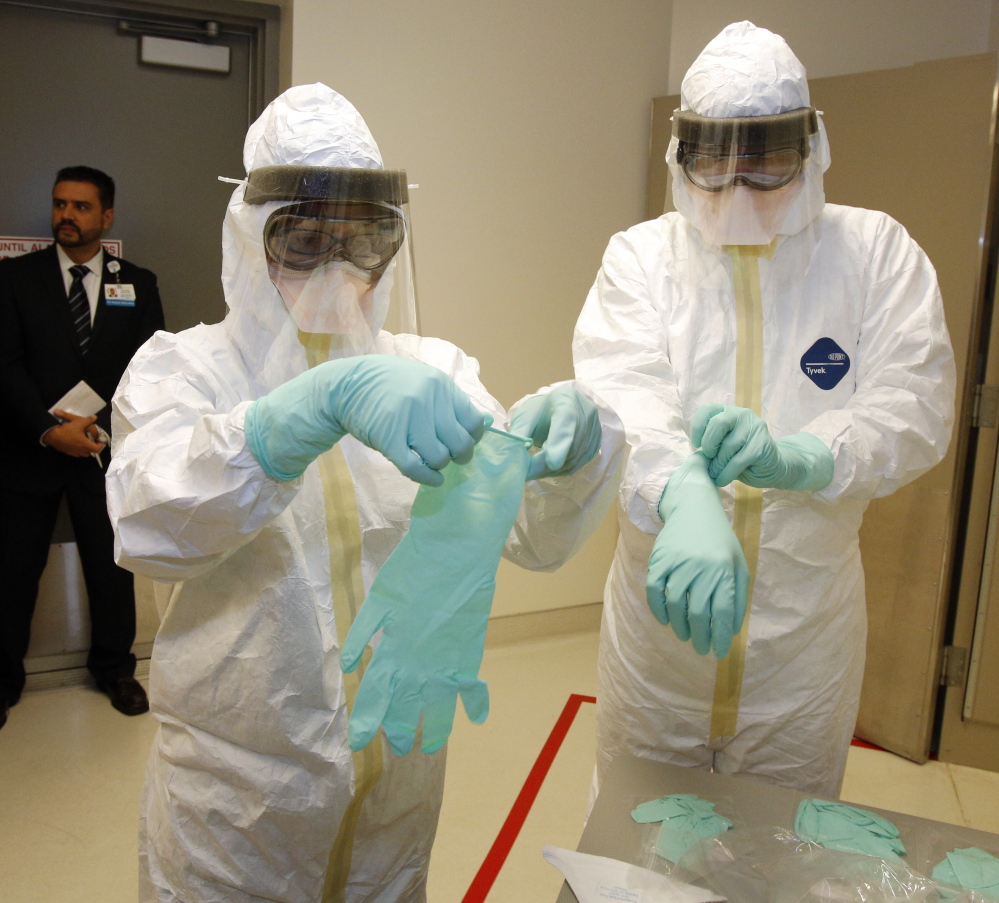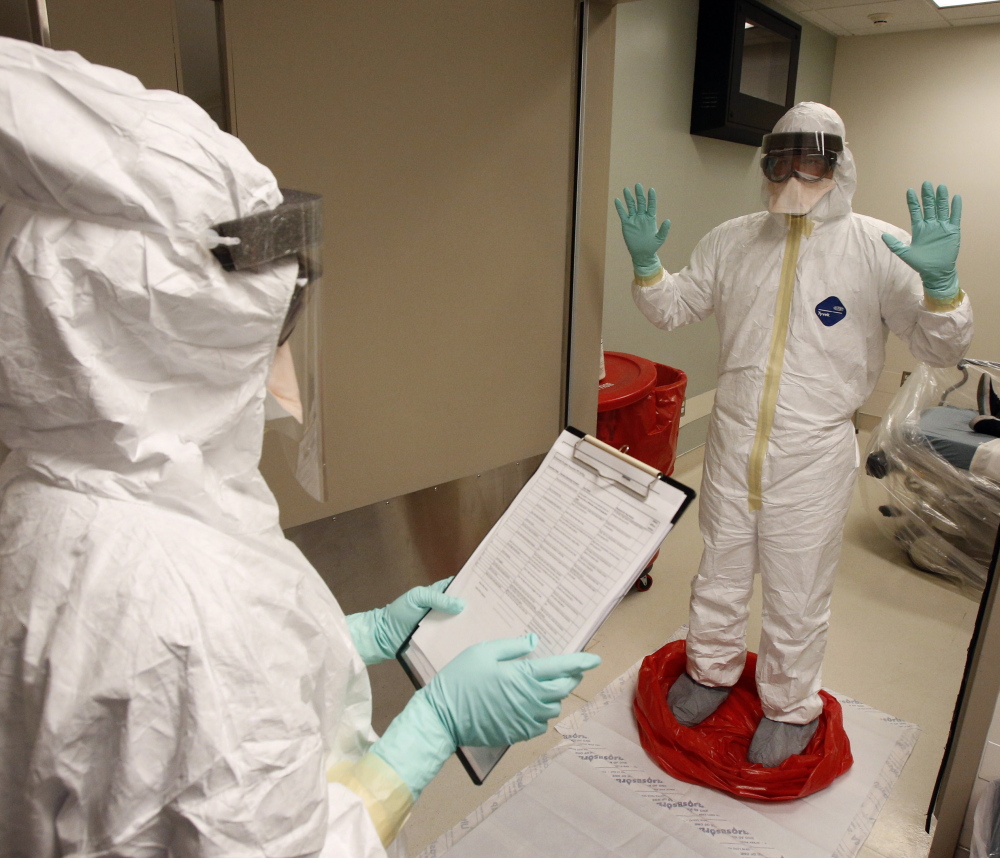ATLANTA — Revised guidance for health care workers treating Ebola patients will include using protective gear “with no skin showing,” a top federal health official said Sunday, and the Pentagon announced it was forming a team to assist medical staff in the U.S., if needed.
Dr. Anthony Fauci, head of the National Institute of Allergy and Infectious Diseases, said those caring for an Ebola patient in Dallas were vulnerable because some of their skin was exposed.
The Centers for Disease Control and Prevention is working on revisions to safety protocols. Earlier ones, he said, were based on a World Health Organization model in which care was given in more remote places, often outdoors, and without intensive training for health workers.
“So there were parts about that protocol that left vulnerability, parts of the skin that were open,” Fauci said.
The CDC guidance was expected as early as Saturday, but its release has been pushed back while it continues to go through review by experts and government officials.
Health officials had previously allowed hospitals some flexibility to use available covering when dealing with suspected Ebola patients. The new guidelines are expected to set a firmer standard: calling for full-body suits and hoods that protect worker’s necks, setting rigorous rules for removal of equipment and disinfection of hands, and calling for a “site manager” to supervise the putting on and taking off of equipment.
The guidelines are also expected to require a “buddy system,” in which workers check each other as they come in and go out, according to an official who was familiar with the guidelines but not authorized to discuss them before their release.
Hospital workers also will be expected to exhaustively practice getting in and out of the equipment, the official said.
Said Fauci: “Very clearly, when you go into a hospital, have to intubate somebody, have all of the body fluids, you’ve got to be completely covered. So that’s going to be one of the things … to be complete covering with no skin showing whatsoever.”
The American Nurses Association and other groups have called for better guidance that sets clearer standards on what kind of equipment, how to put it on and how to take it off.
“We’re disappointed that the recommendations are still not available,” association president Pamela Cipriano said. “Having a lag in official direction from the CDC doesn’t instill the greatest confidence in their ability to rapidly respond.”
Cipriano said she understands the guidance will also include a call for anterooms, apart from the patient room, where protective equipment must be put on and taken off.
The push stems from the infection of two nurses at a Dallas hospital who treated an Ebola-infected patient named Thomas Eric Duncan – the first person diagnosed with the virus in the U.S.
The nurses, Nina Pham and Amber Joy Vinson, were diagnosed with Ebola less than a week later. Officials say how they were infected remains a mystery.
Duncan’s medical records, provided by his family to The Associated Press, show Pham first encountered the patient after he was moved to intensive care at 4:40 p.m. on Sept. 29, more than 30 hours after he came to the ER. Nearly 27 hours later, Vinson first appears in Duncan’s charts.
In Pham’s first entry, she makes no mention of protective gear – although doctors and nurses may not always note their own safeguards in medical records, since they are focused on logging the patient’s care. When she logged again the following morning, she mentioned wearing a double gown, face shield and protective footwear – equipment she mentioned again in later entries.
In the first apparent mention of Vinson, she is said to have worn personal protection, including a hazardous-materials suit and face shield. Hospital officials have said masks that cover the nose and mouth were optional, consistent with CDC guidelines at the time. The CDC later advised leg covers and isolation suits, and the hospital complied, Texas Health Presbyterian officials said.
Nurses have voiced concern that they have never cared for Ebola patients before and feel unprepared and underequipped. “If hospital administrators had to take care of Ebola patients, they would have the gold standard and hazmat suits,” said RoseAnn DeMoro, executive director of National Nurses United, a union with 185,000 members.
In some places that do have the suits, nurses have not practiced taking them on and off.
“The hospital is sending them essentially a link to the CDC website. That’s not preparation. That’s like a do-it-yourself manual,” DeMoro said.
Vinson’s family issued a statement Sunday rejecting claims that the nurse had acted carelessly by flying from Dallas to Ohio, then back to Dallas, after treating Duncan.
Copy the Story LinkSend questions/comments to the editors.




Success. Please wait for the page to reload. If the page does not reload within 5 seconds, please refresh the page.
Enter your email and password to access comments.
Hi, to comment on stories you must . This profile is in addition to your subscription and website login.
Already have a commenting profile? .
Invalid username/password.
Please check your email to confirm and complete your registration.
Only subscribers are eligible to post comments. Please subscribe or login first for digital access. Here’s why.
Use the form below to reset your password. When you've submitted your account email, we will send an email with a reset code.